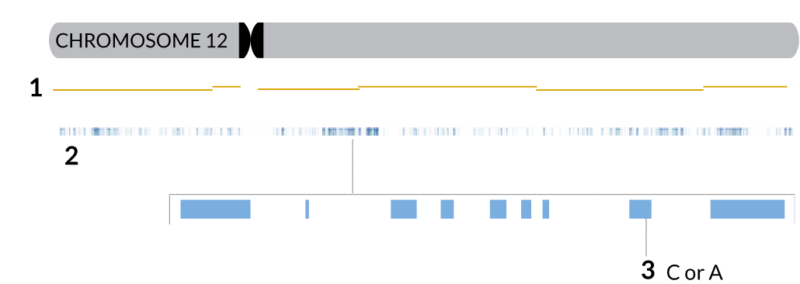Explainer: How DNA testing works
Whether this sequencing ‘reads’ out all of the DNA depends on what test kit was used

Open wide! Scientists can learn about your DNA when you buy a kit and then send a swab or tube of your saliva back to the company.
PeJo29/iStock/Getty Images Plus
Share this:
- Share via email (Opens in new window) Email
- Click to share on Facebook (Opens in new window) Facebook
- Click to share on X (Opens in new window) X
- Click to share on Pinterest (Opens in new window) Pinterest
- Click to share on Reddit (Opens in new window) Reddit
- Share to Google Classroom (Opens in new window) Google Classroom
- Click to print (Opens in new window) Print
Want to find out more about yourself, your family or even your pet? There’s a DNA test for that. Spit in a tube. Let your dog chew a swab. Or pull out some of your cat’s fur. Then ship that sample off in the mail. A few weeks later, you can log into a testing company’s website to get a guide describing the traits suggested by that DNA.
The findings might predict someone’s hair color or suggest whether your genes will make you think the herb cilantro tastes like soap (though if you’ve tasted it, you probably already know what you think). The testing might go on to turn up relatives you didn’t know you had. If you got it for your dog, the test might say whether Fido has any German shepherd, corgi or poodle in its family tree. It might also identify whether you or your dog faces an elevated risk for certain diseases (such as kidney problems).
Such wizardry is known as DNA sequencing. It allows scientists to figure out the order of the “letters” in a DNA molecule. Those letters — called nucleotides — are the chemicals that make up DNA.
There are only four letters: adenine (A), cytosine (C), thymine (T) and guanine (G). Adenine only pairs with thymine. Cytosine only pairs with guanine. This might seem like a very limited alphabet. But the order in which those letters line up within a long string of DNA will spell out genetic instructions that tell each cell of the body which molecules it should make. And there’s plenty of space for long “words.” In humans, dogs and cats, each strand of DNA runs about 6 billion letters long.
Portions of each strand are known as sequences (as in sequences of letters). Decoding the letters in a strand is known as “sequencing” the genetic code. The letters’ precise ordering will change from one individual to the next. Still, the “words” — the instructions the sequences produce — tend to be similar between all members of a species.
Scientists can compare the order of all those letters in one person’s DNA to those in someone else’s. With billions of nucleotides, millions of those letters are going to be different, even between parents and children or brother and sister.
For instance, some people have one letter — say an A — at the place in some sequence where others might have a G or C. Some of those switched letters can alter a gene’s meaning. The new spelling might cause the gene to make a different protein. One tiny spelling tweak could contribute to making you taller or change the color of your eyes. Another might put you at a higher or lower risk for some disease. When compared to someone else, the precise spelling of sequences in your DNA can show how closely related you two are.
There are many companies that will test DNA — for you and even your cat or dog (no fish, gerbils or birds, yet). But all DNA tests are not created equal. What you learn about your genetic makeup depends on the company you choose and the level of testing it does. There are three main types of tests.

1. The whole shebang (almost)
In theory, whole genome sequencing captures all of the 6 billion nucleotides in a genome (GEE-noam) — an organism’s complete set of genes. These companies will have gone through and tried to “read” every A, C, T and G. In reality, they will miss some (as if they were speed-reading and skipped a letter or word now and again). When DNA is packed together into organized units called chromosomes (KROH-moh-soams), it’s easy to miss a letter or two. In the image above, zooming in on the gold bars under chromosome 12 shows such testing gaps.
Whole-genome sequencing will not detect large chunks of missing or re-arranged DNA. It also might miss when a section of DNA has been repeated over and over. Still, this approach gives the most complete view of someone’s particular genes. Companies such as Veritas Genetics offer this testing for people (if prescribed by a doctor). In pets, Darwin’s Ark offers whole-genome sequencing for dogs.
2. Focus on the proteins
DNA contains a lot of letters. But not all of the “words” mean something. Some sequences make proteins. Others may control how often other DNA sequences are turned on to make those proteins. Still others might provide instructions for molecules that are not proteins. Or they might just be sequences full of nonsense that “say” nothing at all.
The exome is that part of a genome that holds protein-coding genes. It makes up only about 1 to 2 percent of someone’s DNA. In the diagram above, the exome appears blue.
Exome sequencing generally does not offer information on genetic tweaks that might turn other genes on or off. It also doesn’t include genes that aren’t used to make a protein. But just because it doesn’t make a protein doesn’t mean some gene doesn’t have a job. Many genes play important roles without making proteins at all. Genos and Helix are two companies offer sequence human exomes. Helix also reads some of the DNA next to protein-coding genes.
3. The minimalist approach
A third type of test looks at SNPs (pronounced “snips”). That’s short for single nucleotide polymorphisms (NU-klee-oh-tyde Pah-lee-MOR-fizms). These tests scout for single-letter misspellings sprinkled throughout your genome.
Where most people have an A, for instance, a minority may have a C. Over time, scientists have identified collections of these SNPs and grouped tests to find them together into single tests called SNP chips, or genotyping arrays.
These can take a sample of an animal’s (or person’s) DNA and test for a preset group of SNPs that are known to be involved in certain traits. Companies can test hundreds, thousands — even millions — of SNPs at a time with these tests. But that’s still only a tiny fraction of the letters in your genome. Ancestry, 23andMe and many other companies rely on these SNP tests to interpret human DNA. Wisdom Panel, homeDNA and emBark do the same for dogs. Wisdom Panel, Optimal Selection and homeDNA use SNPs to look for the ancestral breeds behind any cat.
One gene at a time
You can buy most of these tests without a doctor’s order. But sometimes doctors may want patients to get tested for DNA changes in one or a few genes — alterations that might up an individual’s risk of disease. For people, those tests will take a really close look at the DNA around that gene and decipher the changes that only one person has.
For pets, the University of California, Davis and some other places can check for changes in genes that may cause problems for certain canine and feline breeds. That allows dog breeders to keep vulnerable animals from mating — and passing along their misspelled genes.







